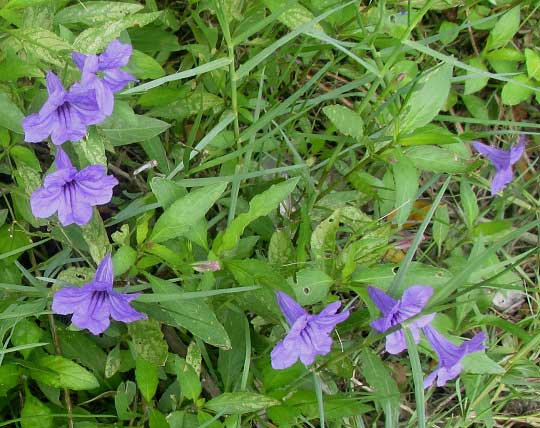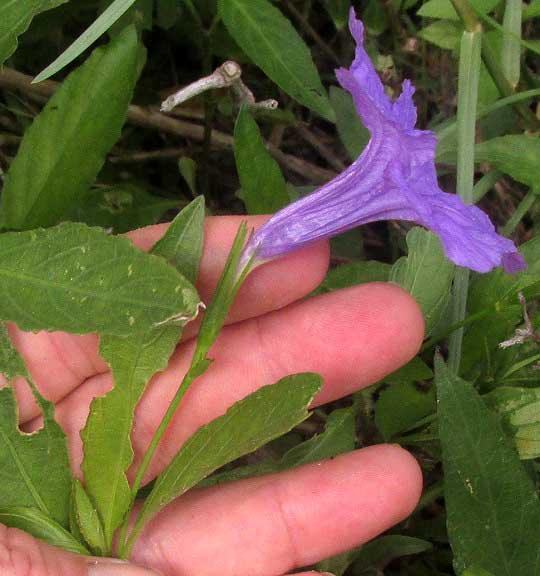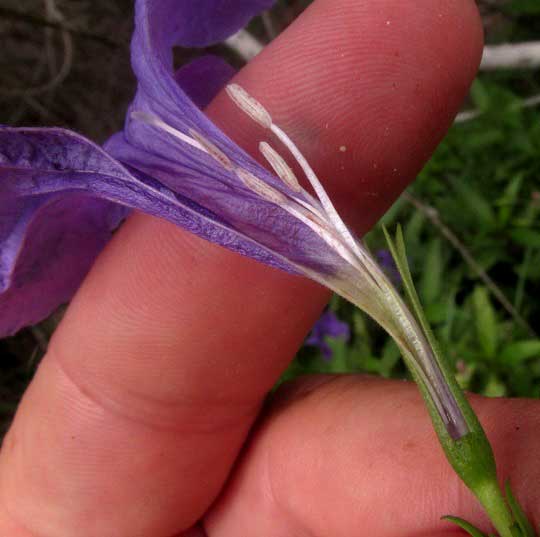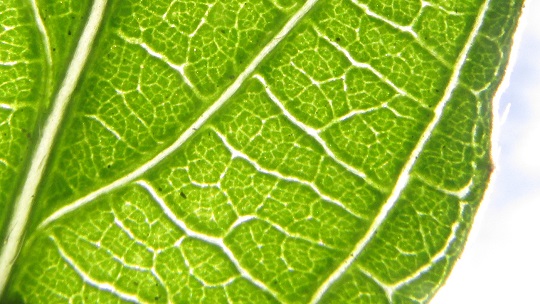Excerpts from Jim Conrad's
Naturalist Newsletter
from the June 28, 2015 Newsletter issued from Río Lagartos, on the Yucatan Peninsula's northern coast (~N21.60°, ~W88.16°), Yucatán state, MÉXICO
MINNIEROOT FLOWERING
At the edge of the PEMEX gas station on the south side of town, right beside the mangroves, a pretty gathering of wildflowers suddenly showed up with fair-sized, bugle-shaped, nearly knee-high, indigo-colored flowers, as shown below:

Just by the flowers' size, color and shape, and by the plants' general size and form, these looked a lot like the several species of "wild petunia," genus Ruellia of the Acanthus Family, we've encountered nearly everyplace we've gone, both in North America and Mexico. If it really was a Ruellia, it'd be the first I'd found here along the Yucatan's arid northern coast, so I got off the bike and took a closer look.
The flowers displayed unusually long, slender calyx lobes, or sepals, surrounding an equally long corolla tube base, all on a fair-sized stem, or peduncle, as shown below:

Flowers of members of the mostly tropical Acanthus Family normally bear two or four stamens, and when there are four they're arranged in pairs of unequal lengths. The opened-up blossom revealed four stamens of unequal lengths, as shown below:

This matter of the stamens is good to keep in mind because otherwise you might think the flowers look like those in the Nightshade or Tomato Family, the Solanaceae. "Real" petunias belong to that Family, but these "wild" petunias obviously don't, because of their stamens.
At the weedy edge of the PEMEX Plaza I wasn't sure whether these wild petunias were wildflowers associated with the mangrove swamp beside them, or if they were cultivars associated with the gas station.
Of the seven wild petunia, or Ruellia, species listed for the Yucatan, none looked like our PEMEX plant. Seeing that, the best bet was that we had a cultivar. Doing a Google image search on the keywords "Ruellia tropical," and scanning the resulting images for wild petunias with flowers of our color and shape, and leaves of our leaves' shape, soon it became apparent that probably we had Ruellia tuberosa.
But that's a sloppy way to identify things, so I looked up technical details for Ruellia tuberosa.
An important field mark is referenced by the species name, tuberosa: The plant's roots bear thickened zones that can pass as tubers. Also, its stems are slightly thickened at their nodes. I returned to the PEMEX station, saw that the stems indeed were swollen at their nodes, like arthritic finger joints, and my finger probing in the dirt could feel that here and there the roots thickened, though I'd not call the thickenings tubers. However, the plants were crowded here and competing with grass, so maybe with a gardener's attentions those thickenings would have been tubers.
Also I'd read that the herbage bore only a few hairs, and that the leaves' secondary veins had conspicuous cross-veins between them, making rectangular patterns. Below, you can see what our plants' veins looked like:

So, all these field marks taken together lead to RUELLIA TUBEROSA, graced with any number of English names, including Minnieroot, Fever Root, Snapdragon Root and Sheep Potato. Minnieroot seems to be the most commonly used on the Internet so we'll go with that. The species has many names because it's so widely planted throughout the world's tropics that it's unclear where its native land is. It seems to have originated in the tropical Americas, and some suspect it may have come from the Caribbean area.
One reason Minnieroot is so commonly planted is that many cultures regard it as medicinal. In a published ethnobotanical work by CA Lans, in Trinidad and Tobago the plant is used as a diuretic (makes you pee), anti-diabetic, antipyretic (reduces fever), analgesic (pain killer), antihypertensive (treats high blood pressure), gastroprotective (sooths stomach), and as a treatment for gonorrhea. In Asia the plant has been present long enough to be firmly established in folk medicine.
So, this is a pretty nice plant to find next to a gas station, and one wonders how it got there. The station is built on rocks and dirt dumped in the mangroves, so maybe it was in the fill dirt. Or maybe there's just someone around that gas station who one day threw some seeds at the corner of the parking area to see what would happen.